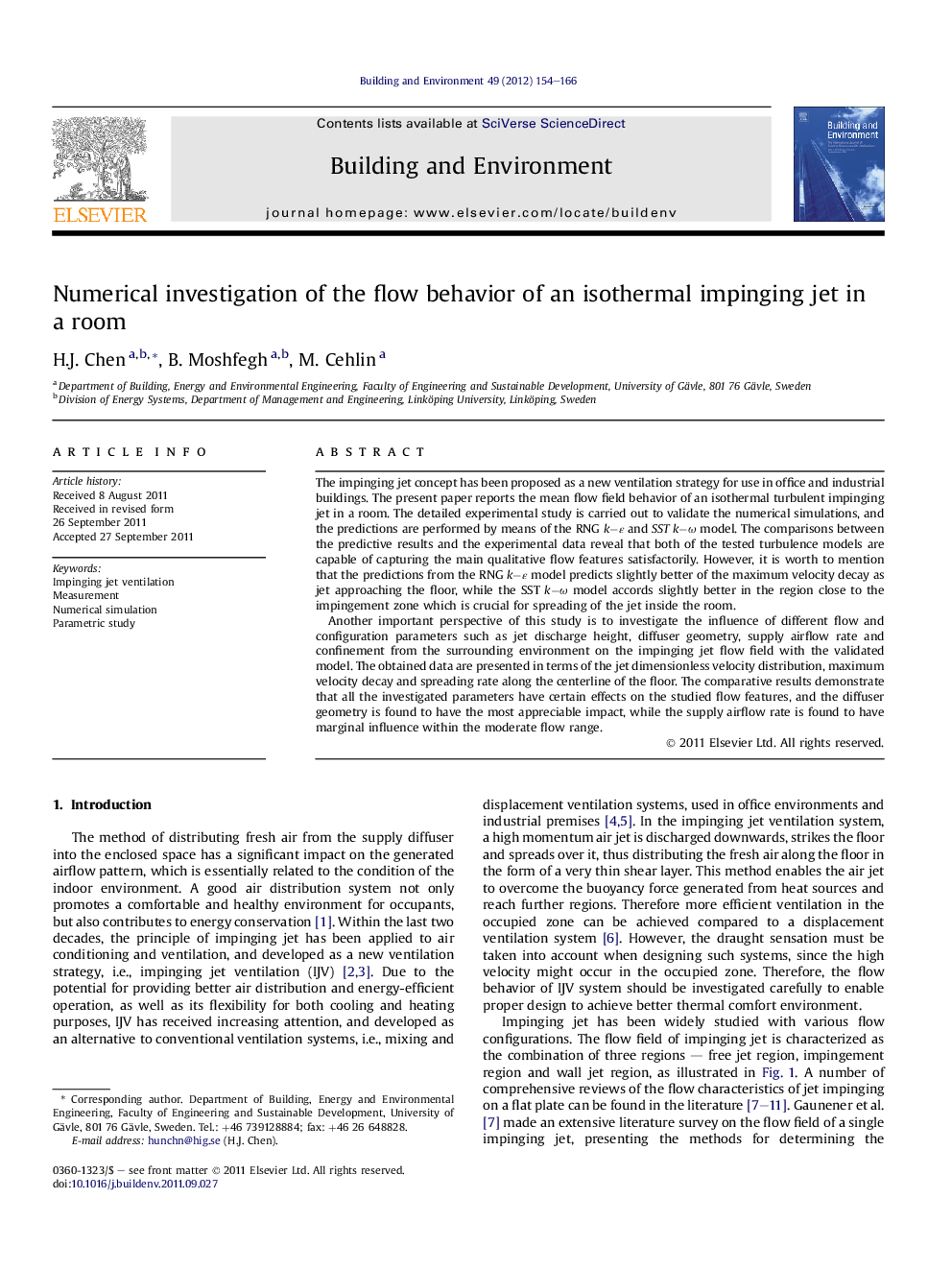| Article ID | Journal | Published Year | Pages | File Type |
|---|---|---|---|---|
| 248642 | Building and Environment | 2012 | 13 Pages |
The impinging jet concept has been proposed as a new ventilation strategy for use in office and industrial buildings. The present paper reports the mean flow field behavior of an isothermal turbulent impinging jet in a room. The detailed experimental study is carried out to validate the numerical simulations, and the predictions are performed by means of the RNG k−ε and SST k−ω model. The comparisons between the predictive results and the experimental data reveal that both of the tested turbulence models are capable of capturing the main qualitative flow features satisfactorily. However, it is worth to mention that the predictions from the RNG k−ε model predicts slightly better of the maximum velocity decay as jet approaching the floor, while the SST k−ω model accords slightly better in the region close to the impingement zone which is crucial for spreading of the jet inside the room.Another important perspective of this study is to investigate the influence of different flow and configuration parameters such as jet discharge height, diffuser geometry, supply airflow rate and confinement from the surrounding environment on the impinging jet flow field with the validated model. The obtained data are presented in terms of the jet dimensionless velocity distribution, maximum velocity decay and spreading rate along the centerline of the floor. The comparative results demonstrate that all the investigated parameters have certain effects on the studied flow features, and the diffuser geometry is found to have the most appreciable impact, while the supply airflow rate is found to have marginal influence within the moderate flow range.
► Validation and numerical parametric study of an isothermal impinging jet in a room. ► Predictions from SST k−ω and RNG model show good agreement with measurement. ► Diffuser geometry influences the impinging jet flow appreciably. ► Supply airflow rate influences marginally within the moderate flow range.
